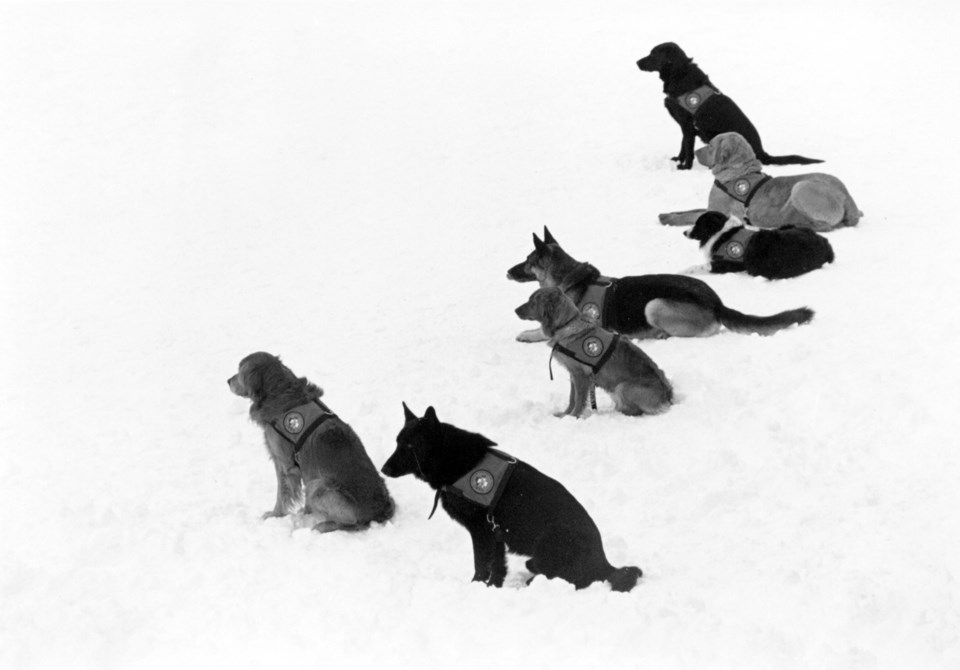The opening of the Peak Chair on Whistler Mountain in 1986 opened up more than just lift-accessed alpine terrain; the increase in patrolled terrain also meant more positions on Whistler Mountain’s ski patrol, a team that usually had low turnover and therefore didn’t hire new patrollers very often. After hearing about these new positions from a friend on patrol, Yvonne Thornton drove her Volkswagen van to Whistler and was hired by Brian Leighton.
Even though she had never skied Whistler Mountain before, Thornton had been a patroller at Panorama and Big White, as well as volunteering on the patrol at Red Mountain. She’d spent the previous summer working for the forest services, and so had rope skills. In an oral history interview in January 2023, she recalled Leighton appreciated that, as the terrain opened by the Peak Chair would need more “rope people.” Thornton began her first season with “a lot of figuring out the terrain,” getting to know the mountain, and avalanche control. Over the following years, she took on other positions as well, including volunteer ski patrol coordinator and dog handler.
By the time Thornton arrived in 1986, Whistler Mountain already had an avalanche rescue dog program established by Bruce Watt and his dog Radar. In 1985, another patroller, Anton Horvath, also became an avalanche rescue dog handler (Horvath is currently a Canadian Avalanche Rescue Dog Association, or CARDA, instructor). During her second season, Thornton decided she wanted to become one as well, and got approval from Horvath to start the process. Like Watt before her, Thornton recalled she didn’t know anything about picking a dog. She ended up getting a border collie from the Fraser Valley, and the two began working their way through the required courses.
CARDA’s program and courses at the time were closely aligned with the Bergwacht, a part of the German Red Cross that focuses on mountain rescue. As part of their training, Thornton and her dog went to Germany. She flew into Munich and then had to take multiple trains, which got slower and smaller as she got further from the city, all while keeping track of multiple bags, boots, skis, and, of course, her dog. On the journey back to Munich, she accidentally got on the wrong train and, when the conductor noticed, the train was stopped. Thornton had to get off and board another train that was passing back the other way to go back to the station and try again.
As far as Thornton is aware, she was the first woman to take one of the Bergwacht courses. Thornton remembered that “it was really fun” and she “cruised around, did some search training, ate a lot of meat and cheese and bread,” but, looking back, she also isn’t entirely sure how she did it.
The mountains, ski patrol and the avalanche rescue dog program have changed a lot since 1986. Interested patrollers now require five years of patrol experience, and Thornton described the current interview process as “intense.” CARDA has also introduced more requirements over the years, and handlers now must have their Level 1 instructing certification and be part of a search and rescue group involved in mountain rescue or a ski hill that has avalanche control and mountain rescue. (Thornton is currently involved in both Whistler SAR and ski patrol.) As the organization and specific programs have gotten more established, she has also seen more mentorship and education when it comes to picking dogs to train as avalanche rescue dogs. Since her first border collie, Thornton has worked with two Malinois, a shepherd, and her current dog, a lab named Dyna, with whom she has also trained for wilderness searches and tracking.
According to Thornton, the avalanche rescue dogs on Whistler are an accepted operational part of the team and, when seeing the dogs on the mountain, it is important to remember they are working, not part of a “petting zoo or bring-your-pet-to-work day.”
Thornton did admit, though, that it is pretty fun to be able to work with her dog. It also seems to be pretty fun for the dogs.
“All of my dogs have just loved going up there,” she recalled.
“Like it’s always, ‘Best day ever.’”




